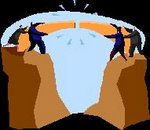So, it’s the new year! No dearth of new ideas, goals, for myself and/or colleagues! Therefore, this post is about tools to help achieve our #BloggingBuddies #ETCoaches goals.
In my seemingly never-ending quest for the perfect planner, I have explored many different time-management solutions. My all-time favorite was the Stephen Covey 7 Habits Planner, until the world went digital and our school went Google. Since then I’ve experimented with more digital options –the Getting Things Done approach, Pomodoro Technique, Google Keep, Evernote, Trello, and the GTasks Pro app. I have tweaked and settled on some of the previously mentioned strategies and mainly use the GTasks Pro app for tasks lists, which syncs with my Google Calendar on my phone and other computing devices. I think it’s worked pretty well, when I am disciplined about checking it every day. That said, I’m still on the look-out for the killer calendar/planner app!
Last summer, I happened upon the Best Self Journal. Not a killer app. In fact, a throw-back to paper! Yikes! However, I will admit it did help me stay focused on the big picture, even though I did not complete it every day when things got crazy-busy. Beginning with Back2School and continuing through January 8, I was working on three big goals. Besides all things B2S, I wanted to get certified as an Apple Teacher and Google Certified Educator Level 1. I was also enrolled in a MOOC, Launching Innovation in Schools, with a colleague, which is in the November post below So, a lot to keep track of!
The Best Self Journal is a 13-week roadmap/daily planner. What I like about it is you can plan for both long- and short-term goals. While it took me longer than 13 weeks – really, 23, including the holidays – I was able to meet my three goals of certifications as Apple Teacher, Google Certified Educator Level 1, and completing studies in the online course. Between the morning and evening routines, the daily targets, wins, and lessons-learned components, I was able to track my progress, which helped me stay disciplined. I didn’t do so well with the weekly progress reporting, so that’s an area upon which I’ll need to improve. However, the gratitude reflections are also foundational in the teachings of Ignatian spirituality, which inspire my life; so that’s another plus for BSJ.
All in all, while not perfect, I liked the BSJ enough that I invested in another one. I hope to refine my practice and sustain the momentum. If you have any system which has worked well for you, do tell in the comments below.
Good luck on meeting your goals for 2018! Happy New Year!


















